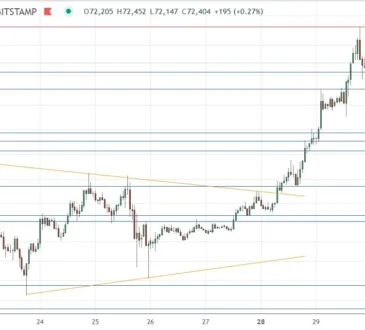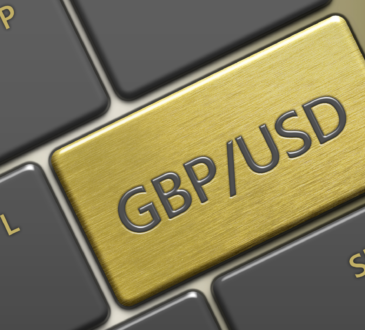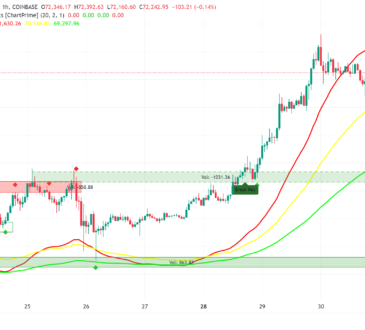Here is what you need to know on Friday, August 9:
Financial markets hold steady on the last trading of a week that featured extremely volatile action in a variety of asset classes. Following Thursday’s risk rally, US stock index futures trade flat in the European morning on Friday. The July jobs report from Canada will be the only data highlighted in the economic calendar in the second half of the day.
US Dollar PRICE This week
The table below shows the percentage change of US Dollar (USD) against listed major currencies this week. US Dollar was the strongest against the Swiss Franc.
| USD | EUR | GBP | JPY | CAD | AUD | NZD | CHF | |
|---|---|---|---|---|---|---|---|---|
| USD | -0.14% | 0.29% | 0.31% | -1.02% | -1.35% | -1.22% | 0.97% | |
| EUR | 0.14% | 0.35% | 0.29% | -1.01% | -1.20% | -1.19% | 1.00% | |
| GBP | -0.29% | -0.35% | 0.00% | -1.33% | -1.54% | -1.53% | 0.63% | |
| JPY | -0.31% | -0.29% | 0.00% | -1.28% | -1.69% | -1.49% | 0.68% | |
| CAD | 1.02% | 1.01% | 1.33% | 1.28% | -0.30% | -0.19% | 1.81% | |
| AUD | 1.35% | 1.20% | 1.54% | 1.69% | 0.30% | 0.02% | 2.21% | |
| NZD | 1.22% | 1.19% | 1.53% | 1.49% | 0.19% | -0.02% | 2.19% | |
| CHF | -0.97% | -1.00% | -0.63% | -0.68% | -1.81% | -2.21% | -2.19% |
The heat map shows percentage changes of major currencies against each other. The base currency is picked from the left column, while the quote currency is picked from the top row. For example, if you pick the US Dollar from the left column and move along the horizontal line to the Japanese Yen, the percentage change displayed in the box will represent USD (base)/JPY (quote).
Wall Street’s main indexes registered impressive gains on Thursday as fears over a continuation of the unwinding of the Japanese Yen (JPY) eased. Meanwhile, de-escalation of geopolitical tensions further helped the risk mood improve. According to the CNN, Iran could refrain from attacking Israel in exchange for a ceasefire in Gaza.
After posting modest gains for three consecutive days, the US Dollar Index (DXY) seems to have stabilized above 103.00 in the early European session. In the meantime, the benchmark 10-year US Treasury bond yield fluctuates in a narrow channel slightly below 4% after rising over 5% in the previous three days.
During the Asian trading hours, the data from China showed that the Consumer Price Index (CPI) rose 0.5% on a monthly basis in July. This reading followed the 0.2% decrease recorded in June and came in above the market expectation for an increase of 0.3%. AUD/USD gained more than 1% on Thursday and seems to have gone into a consolidation phase at around 0.6600 on Friday.
EUR/USD failed to make a decisive move in either direction for the second straight day on Thursday. Early Friday, the pair continues to move sideways above 1.0900.
GBP/USD finally benefited from improving risk mood and gathered recovery momentum on Thursday, rising over 0.4% on a daily basis. The pair continues to edge higher in the European session and was last seen trading a few pips above 1.2770.
USD/JPY built on Wednesday’s gains and closed in the green on Thursday. The pair stays relatively quiet in the European morning and trades in a tight channel above 147.00.
Gold staged a decisive rebound and continued to push higher after breaking above $2,400 on Thursday, snapping a six-day losing streak. XAU/USD stays relatively quiet and trades at around $2,420.
Risk sentiment FAQs
In the world of financial jargon the two widely used terms “risk-on” and “risk off” refer to the level of risk that investors are willing to stomach during the period referenced. In a “risk-on” market, investors are optimistic about the future and more willing to buy risky assets. In a “risk-off” market investors start to ‘play it safe’ because they are worried about the future, and therefore buy less risky assets that are more certain of bringing a return, even if it is relatively modest.
Typically, during periods of “risk-on”, stock markets will rise, most commodities – except Gold – will also gain in value, since they benefit from a positive growth outlook. The currencies of nations that are heavy commodity exporters strengthen because of increased demand, and Cryptocurrencies rise. In a “risk-off” market, Bonds go up – especially major government Bonds – Gold shines, and safe-haven currencies such as the Japanese Yen, Swiss Franc and US Dollar all benefit.
The Australian Dollar (AUD), the Canadian Dollar (CAD), the New Zealand Dollar (NZD) and minor FX like the Ruble (RUB) and the South African Rand (ZAR), all tend to rise in markets that are “risk-on”. This is because the economies of these currencies are heavily reliant on commodity exports for growth, and commodities tend to rise in price during risk-on periods. This is because investors foresee greater demand for raw materials in the future due to heightened economic activity.
The major currencies that tend to rise during periods of “risk-off” are the US Dollar (USD), the Japanese Yen (JPY) and the Swiss Franc (CHF). The US Dollar, because it is the world’s reserve currency, and because in times of crisis investors buy US government debt, which is seen as safe because the largest economy in the world is unlikely to default. The Yen, from increased demand for Japanese government bonds, because a high proportion are held by domestic investors who are unlikely to dump them – even in a crisis. The Swiss Franc, because strict Swiss banking laws offer investors enhanced capital protection.





